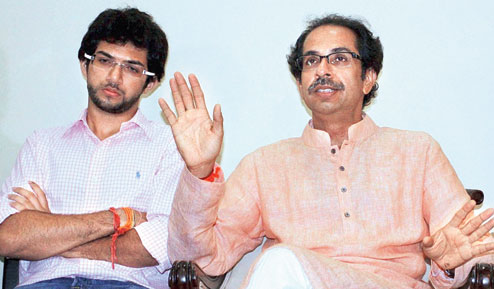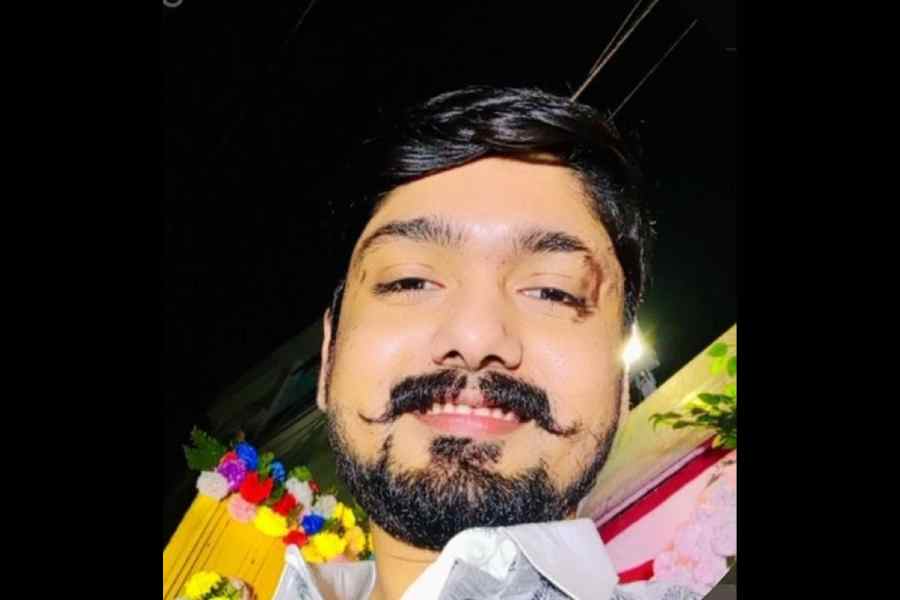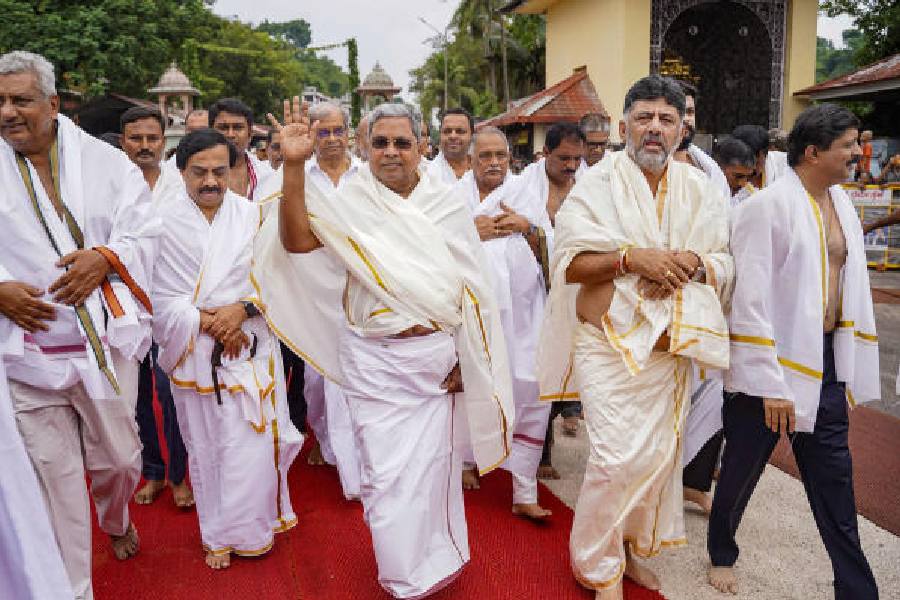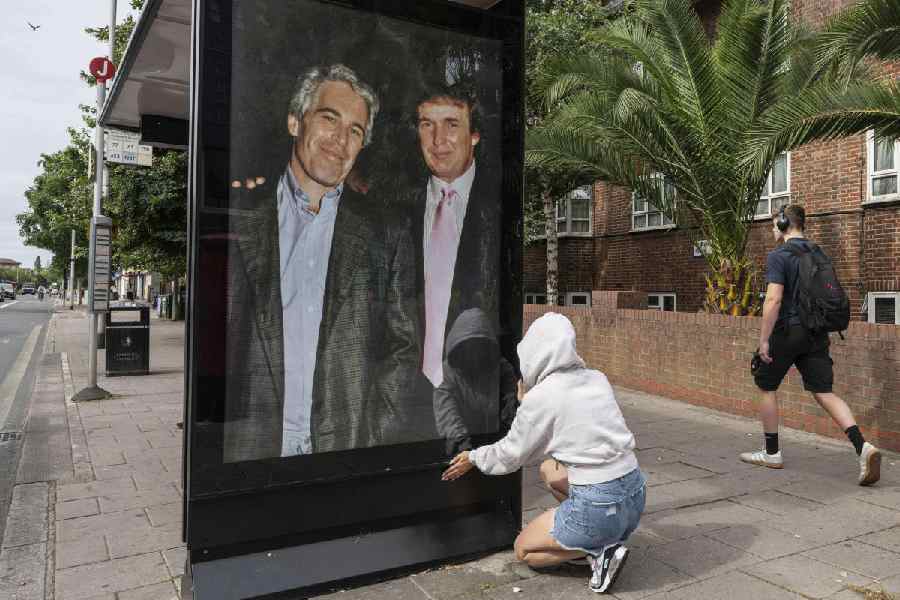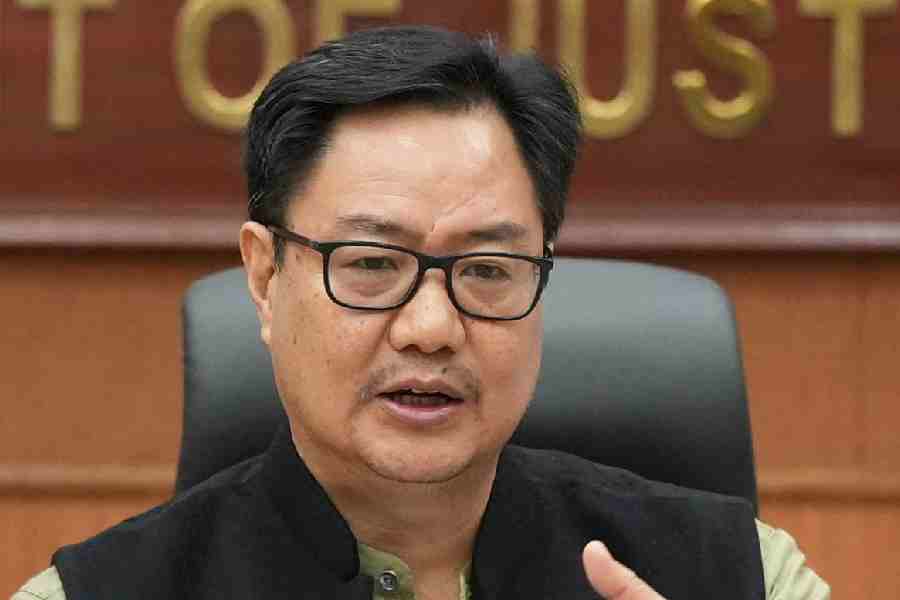 |
| Uddhav Thackeray with his son Aditya interacts with media in Mumbai on Sunday. (PTI) |
 |
| Raj Thackeray |
Oct. 19: Uddhav Thackeray deadpanned in Mumbai this evening: “I am sitting at my home peacefully, if somebody thinks our support is needed, they can approach us.”
Balasaheb Thackeray would have been proud. The son who never spoke like him on the campaign trail is finally showing his political savvy — that too on a day the cousin who resembled the late uncle was nursing a bloody nose and more.
Uddhav, the son till now condemned to be overshadowed by his cousin Raj, today slayed the demons that have been haunting him for years.
Not only has Uddhav’s Shiv Sena emerged as the runner-up in Maharashtra with 63 seats but the performance also stands magnified in front of the debacle suffered by his cousin. Raj’s Maharashtra Navnirman Sena won only one seat.
Uddhav’s triumph was all the more sweet because he also fought against Narendra Modi, the biggest political phenomenon India has seen in a decade.
When Shiv Sena founder Bal Thackeray passed away on November 17, 2012, many had predicted a vertical split in the Sena and surmised that party workers who liked aggressive street battles on the issue of Marathi asmita (self-pride) would flock to Raj’s MNS.
However, not only did Uddhav keep his flock together, he has ensured the Sena is in contention for power for the second time in Maharashtra. Although Uddhav’s claim that the Sena would win a majority on its own has been punctured badly, the Assembly poll verdict has made his party a force that cannot be ignored in the state.
In contrast, Raj Thackeray’s party, which won 13 seats in its debut Assembly elections in 2009, largely powered by his campaign against north Indian migrants, finds itself staring at political wilderness. The MNS fielded 219 candidates in the 288-seat Assembly polls but won only one seat. Sharad Sonawane, from the Junnar constituency in Pune, is the MNS’s solitary winner.
Uddhav underscored what victory meant to him: “We have defeated those who hurt Balasaheb.”
The assertion was more than symbolic. Among the seats the Sena wrested from the MNS are Mahim and Sewri. Not only had two of the closest aides of Raj contested from there, Thackeray Senior had once expressed dismay at losing the two seats, part of the Sena’s traditional base, to the MNS in 2009.
Shiv Sena Bhavan, the party headquarters, and Shivaji Park, which has a garden memorial to Bal Thackeray, fall in the Mahim constituency.
When the BJP and the Sena parted ways to contest the Assembly polls solo, the odds were formidable.
The Sena owned its islands of power but its political adversaries, the Congress and the Nationalist Congress Party (NCP), controlled structures such as the sugar cooperatives that predominantly influenced the state’s politics.
Cooperatives were virgin territory for the BJP and the Sena. The two parties’ traditional discourse on their brand of Hindutva and regional chauvinism did not click in a big way outside Greater Mumbai, except in places where minorities or the north Indian migrants had a considerable presence or in areas that had an umbilical link with Mumbai, like Konkan on the west coast. Konkan sends the largest number of Marathi-speaking migrants to Mumbai, Thane and Kalyan.
However, by becoming the runner-up, the Sena has proved that it can pick up the gauntlet and acquit itself when called upon to do so.
“Our first challenge was to answer the BJP on its own terms,” a Sena source said. “If Modi harped on governance and development before the Lok Sabha polls, we too were determined to do the same and avoid divisive language.”
Uddhav’s son Aditya Thackeray, a Michael Jackson fan hooked on the social media, impressed upon his father that the Sena must “look new and fresh”. Uddhav, coping with a heart surgery, increasingly depends on Aditya for political inputs, said party sources.
Like Modi in the Lok Sabha election run-up, a Sena source said, Uddhav and Aditya figured out early on that Maharashtra’s young voters had little or no use for the provincial “Marathi manoos-speak” the Thackerays had belted out for years.
In June this year, Uddhav offered a sneak peek into what the Sena’s manifesto would be like. “Let’s talk development, not politics,” was the motto.
He said its focus would be on subjects like an environment-friendly coastal road for Mumbai, an eastern waterfront, and interactive virtual classrooms in schools run by the Brihanmumbai Municipal Corporation (BMC).
Mumbaikars who had watched the Sena rule the BMC for over 18 years were sceptical of the makeover attempt. “The BMC is in the pits. Every year when it rains, we suffer the same old water-logging and the threat of floods,” complained a resident of Mahim, which was worst hit by the deluge of 2005.
Even so, this month, when the Sena released its “Vision Document” before the elections, Muslims noted that it had made it a point to state that the promised “E-Prabodhan” scheme to distribute solar-power-charged tablets to middle and high school students would also cover those studying in Hindi and Urdu-medium schools. “These were little ways in which we hoped to minimise the hostility towards us,” a Sena MP said.
The Sena also fielded a north Indian migrant, Santosh Singh, from Mumbai’s Chandivili.
Not that Uddhav ignored the Sena’s traditional constituency. The party appealed to its ranks to help realise Bal Thackeray’s dream of capturing power in the first election after his death. He fought the BJP by accusing it of trying to undermine “Marathi asmita”, and he opposed the division of Maharashtra and the creation of a Vidarbha state.
The marginalisation of the Sena’s ideological sibling, the MNS, also helped Uddhav.
In the previous elections, Raj, who made a greater political impact with his fiery oratory and extreme positions on the Marathi versus non-Marathi debate — cut into the votes of the BJP-Sena combine. Both parties suspected that Raj was patronised by the Congress and the NCP to act as a spoiler.
This time, with the Congress and the NCP parting ways, the MNS’s damage potential got minimised.
Unlike the Sena, which steered clear of discord, the MNS belatedly played the “Marathi manoos” card. As the BJP foregrounded Modi as its star in Maharashtra, the MNS resurrected the old divisions between Maharashtra’s Gujarati and Marathi-speaking settlers.
The Sena refused to bite the bait while the MNS’s gambit didn’t pay off.
The MNS failed to find and exploit an emotive issue this time. It had mounted an aggressive campaign against highway levies but the drive lost its sting when the Congress-NCP government shut down 44 toll plazas.
The MNS appeared listless, with Raj initially suggesting that he would contest the polls if necessary but backing out later, claiming that the Thackeray clan considered the entire Maharashtra its constituency.

